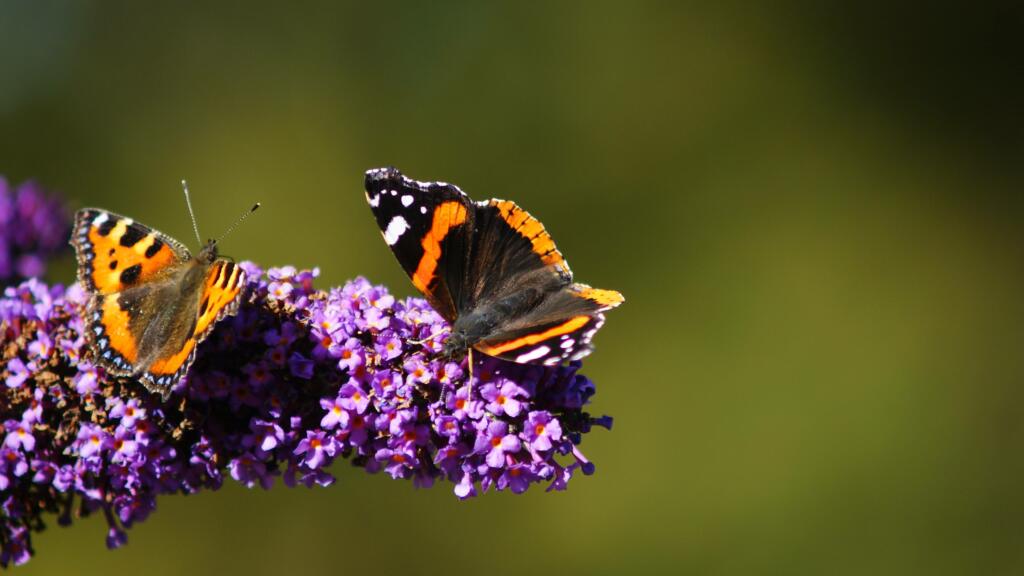
No-dig gardening: your next project?
Rosanna Spence
Saga Exceptional explores how we can help protect endangered species.
If you feel like there aren’t as many butterflies as when you were younger, you’re not wrong. Butterfly populations across the UK have declined by 80% since the 1970s, according to wildlife charity Butterfly Conservation.
The alarming statistic, which appears in its latest The State of the UK’s Butterflies 2022 report, is a ‘warning signal of the wider biodiversity crisis’, the organisation says. That’s because these insects are crucial to understanding the UK’s wider ecosystem.
If you feel like there aren’t as many butterflies as when you were younger, you’re not wrong. Butterfly populations across the UK have declined by 80% since the 1970s, according to wildlife charity Butterfly Conservation.
The alarming statistic, which appears in its latest The State of the UK’s Butterflies 2022 report, is a ‘warning signal of the wider biodiversity crisis’, the organisation says. That’s because these insects are crucial to understanding the UK’s wider ecosystem.
 Credit: Shutterstock / Quirky Badger
Credit: Shutterstock / Quirky BadgerThe study found that specialist species which rely on grasslands abundant with flowers, heathland and woodland clearings have experienced huge losses in habitats, so they’ve declined dramatically.
Species that can breed in less specific habitats, such as farmed countryside and urban areas, haven’t fared as badly, though they’ve still fallen in numbers overall (by 17% in abundance and 8% in distribution). Declines like this often indicate of a broader drop in biodiversity in an area as land use changes over the years.
Event for your diary: The Big Butterfly Count runs each year, organised by Butterfly Conservation. The survey helps experts assess the general health of the UK environment by everyone lending a hand and counting the types and numbers of butterflies (and a few moths you’ll spot during the day too) that we see.
While half of all Britain’s remaining butterfly species are now listed as at risk of extinction on the British Red List, conservation projects have proved that efforts by more gardeners can lead to a better understanding of (and positive impact on) population numbers.
 Credit: Shutterstock / Lioneska
Credit: Shutterstock / LioneskaThese include the successful recent reintroduction of the chequered skipper to England, a succession of long-term conservation projects driving up numbers of wood white butterflies across the West Midlands, and peatland restoration on lowland bogs in Scotland which is benefiting the large heath butterfly.
“Thanks to tens of thousands of people who contribute sightings… we have amazing data to plot the changing fortunes of our butterflies”
“Thanks to tens of thousands of people who contribute sightings through projects such as the UK Butterfly Monitoring Scheme and Big Butterfly Count, we have amazing data to plot the changing fortunes of our butterflies,” Dr Richard Fox, Head of Science for Butterfly Conservation and lead author of the report, told us.
“What is needed now is a step-change in government support to bring butterflies and other wildlife back to the UK’s nature reserves, farmland, forests and built-up areas.”
 Credit: Shutterstock / Barking
Credit: Shutterstock / BarkingButterfly Conservation is calling on the government to take action to protect habitats, help nature’s recovery, and prevent more species from being lost. But we can all play a part in creating conditions that will attract, feed and help local butterfly populations thrive.
As many of us are preparing our gardens for spring, it’s an ideal time to plan flowering plants that will benefit butterflies.
Here are three top gardening tips that Butterfly Conservation shared with Saga Exceptional:
 Credit: Shutterstock / PJ photography
Credit: Shutterstock / PJ photographyIf you’re looking to make your garden even more butterfly-friendly, the Royal Horticultural Society (RHS) suggests some useful tips:
If you’re keen to discover plants that produce nectar from spring to autumn, and grow some delicious for caterpillars, check out RHS’s growing suggestions that will encourage butterfly activity throughout the year.
To make sure your good intentions don’t go to waste, Natural History Museum’s ecologist Larissa Cooper has advised in a blog on the museum’s website that people should research butterflies native to where they live, so that you can learn what these species feed on and provide the right food for their caterpillars.
Many butterflies are found across large parts of the UK, but there are variations. For instance, she explains people can plant milk parsley to attract swallowtails if they live in the Norfolk Broads, but that wouldn’t be helpful in other areas swallowtails don’t visit.
There’s good news too for people who don’t have a garden, but want to help their local butterfly populations, as it’s possible to attract species to a window box or balcony if you plant the right food for caterpillars (just don’t expect to harvest much of the cabbage for dinner!).

Written by Rosanna Spence she/her
Published: Updated:
Rosanna Spence has been a journalist for nearly 10 years, reporting on a huge array of topics – from microwaves to cocktails, sustainable buildings, the Caribbean islands and beyond. She’s interviewed chefs at the helm of Michelin-starred restaurants and chatted to countless CEOs about their businesses, as well as created travel guides for experienced travellers seeking life-changing adventures. Throughout her career, she has created content for Business Traveller, i-escape.com, Pub & Bar, BRITA, Dine Out and many more leading titles and brands.